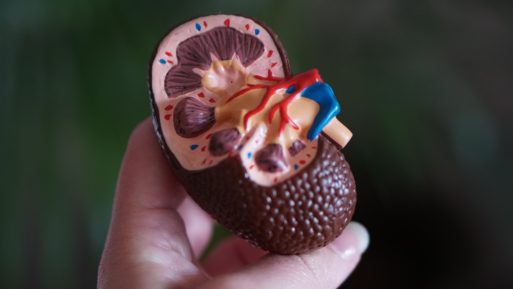
Living donor matching systems have revolutionized kidney transplants
Over 90,000 Americans sit on a waitlist for a kidney transplant, vastly outnumbering the amount of available deceased donors. But a growing network of living donors offers hope to those asking for a miracle.
Kidney transplants are the most common and most requested transplant procedure in the United States. In 2020, 23,401 kidney transplants were performed, compared to 8,896 liver transplants, the next most commonly donated organ according to the United Network for Organ Sharing (UNOS). Even so, the average wait time for a kidney donation from a deceased donor is three to five years, and with nearly 60,000 people added to the national kidney wait list since 2018, it is difficult to find enough donors for those in need of a transplant.
Matching Living Donors
With that being said, donations have increased nearly every year in the past decade thanks to a system developed by Nobel Prize winners Alvin Roth and Lloyd Shapley in 2004 that was initially applied at the New England Program for Kidney Exchange. Roth, an economist, and Shapley, a mathematician, developed models for computers to match donors with patients from across the country. Before the system was instituted, patients would go through a single transplant center, with doctors reaching out to friends and family for compatible donors. If they were unable to find a match within the patient’s circle, the patient would then go on the waitlist. Thirteen people die every day waiting for a life-saving kidney transplant, according to the National Kidney Foundation.
Roth and Shapley’s models allowed for incompatible donors to be switched out with compatible donors from other transplant networks. So even family members registered in the network that were incompatible with their loved ones could still give the gift of life to a stranger.
Life-Saving Donor Chains
As a result of the pairing system, sometimes chains of unrelated donors are created. One chain stretched 16 people long, beginning with a man in Arizona, eventually reaching Amy Infanger, a Minnesota math teacher, and finally concluding with her husband Bill donating his kidney to a transplant patient in New York.
Living donor numbers have soared since the system’s implementation in 2004, when 34 kidney transplants from living donors were performed, to a peak of 6,886 in 2019. Living donations dropped in 2020 due to a myriad of public health concerns from potential donors as well as tightened restrictions from hospitals and donation centers due to COVID-19. While the increase in donors is notable, there is still a considerable gap to cover. According to data from the Health Resources and Services Administration, 90% of U.S. adults support organ donation while only 60% are registered as organ donors.
Anyone interested in registering to the National Donate Life Registry used by the UNOS can do so at donatelife.net.

 Living Kidney Donation Offers Hope for Transplants on Wait List
Living Kidney Donation Offers Hope for Transplants on Wait List




 “In Case You Don’t Live Forever” by Ben Platt
“In Case You Don’t Live Forever” by Ben Platt
 Our Monthly Tip: Make an “In Case of Death” File to Ease Loved One’s Grief
Our Monthly Tip: Make an “In Case of Death” File to Ease Loved One’s Grief














